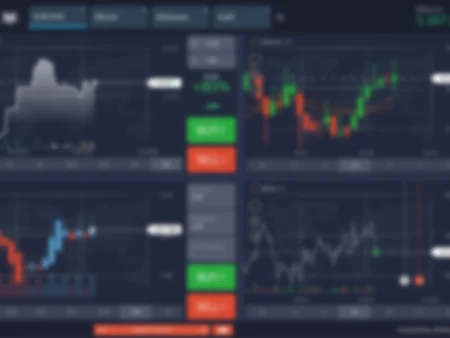Day trading is one of the most exciting and fast-paced forms of trading, where traders buy and sell financial instruments within the same day, aiming to capitalize on short-term price movements. It’s a strategy that requires sharp focus, quick decision-making, and a deep understanding of market trends. While the potential for profits can be high, day trading also comes with its own set of risks.
This article will explore the ins and outs of day trading, discuss its positives and negatives, and provide tips and tricks to help you develop a successful day trading strategy.
What Is Day Trading?
Day trading is the practice of buying and selling assets like stocks, forex, cryptocurrencies, or commodities within a single trading day. Unlike longer-term investors, day traders aim to take advantage of short-term price fluctuations, often entering and exiting positions within minutes or hours. The goal is to close all trades by the end of the day to avoid overnight risk, where the market could move against a position when the trader is not actively monitoring it.
Day trading can be applied in various markets, but it’s especially popular in highly liquid markets, such as:
- Stock markets (e.g., NASDAQ, NYSE)
- Foreign exchange (Forex) market
- Cryptocurrency markets
- Commodities (e.g., oil, gold)
Positives of Day Trading
There are several reasons why many traders are drawn to day trading. Here are some of the major benefits:
1. Potential for Quick Profits
Day traders seek to profit from small price movements that occur within a trading session. With proper strategies and discipline, it’s possible to generate profits on a daily basis. The speed of day trading can be exciting and lucrative for those who know how to capitalize on market volatility.
2. No Overnight Risk
Since day traders close all positions by the end of the trading day, they avoid the risk of negative overnight news, earnings reports, or geopolitical events that could cause a stock or other asset to gap significantly against their position. This allows traders to have a fresh start every day.
3. Leverage Opportunities
Many brokers offer leverage to day traders, allowing them to control larger positions with a smaller amount of capital. This magnifies both potential gains and losses. In the forex market, for example, traders can access leverage up to 30:1 (or higher for professional accounts), giving them greater buying power with relatively low capital.
4. Liquidity and Market Access
Day traders usually focus on liquid markets with high trading volumes, ensuring that they can enter and exit positions quickly without worrying about illiquidity. Stock market day traders often focus on highly traded stocks like Apple, Tesla, and Amazon, while forex traders focus on major currency pairs like EUR/USD and GBP/USD.
5. Independence and Flexibility
Day trading offers a level of independence and flexibility not found in most traditional jobs. As a day trader, you have the freedom to set your own hours, control your own trading decisions, and potentially work from anywhere in the world with an internet connection.
Negatives of Day Trading
While day trading has its advantages, it also comes with significant risks and challenges. Here are some of the key downsides to consider:
1. High Risk and Volatility
The same volatility that makes day trading profitable can also lead to significant losses. Markets can move rapidly in unexpected directions, and even the most experienced traders can face losing streaks. Without proper risk management, day traders can quickly lose substantial amounts of capital.
2. Time-Consuming
Day trading requires full-time attention and focus. Unlike longer-term strategies, where trades can be left to run for days or weeks, day trading involves constantly monitoring the market and executing trades in real-time. This can be both mentally and physically exhausting, especially when trading for extended hours.
3. High Transaction Costs
Frequent trading leads to more transaction costs. Even though many brokers offer low commissions, the sheer number of trades a day trader makes can add up over time. Spreads, commissions, and slippage (the difference between the expected price and the actual price of a trade) can eat into profits if not carefully managed.
4. Psychological Pressure
Day trading can be stressful, as traders must make split-second decisions and deal with the emotions that come with trading, such as fear, greed, and frustration. It requires a cool head and the ability to stick to a strategy even during periods of losses.
5. Risk of Overtrading
In the quest for quick profits, day traders are often tempted to overtrade—entering trades without a clear plan or strategy. Overtrading can lead to unnecessary losses and poor decision-making, especially when driven by emotional reactions to the market.
Essential Tips and Tricks for Day Trading Success
To increase your chances of success in day trading, here are some important tips and strategies to keep in mind:
1. Have a Solid Plan
Successful day trading starts with a well-defined trading plan. This plan should include specific entry and exit points, risk management rules, and criteria for trade selection. Your plan should be based on a proven strategy and not on gut feelings or impulsive decisions.
A trading strategy might include technical indicators such as moving averages, RSI (Relative Strength Index), or candlestick patterns, and it should be adaptable to different market conditions. A clear plan ensures that you stick to your strategy and don’t fall prey to emotions when the market moves against you.
2. Start Small
If you’re new to day trading, it’s best to start with small positions while you gain experience. This way, you can learn how the market behaves, how to use your trading platform, and how to handle the emotional aspect of trading without risking too much capital. As you build confidence, you can gradually increase your position sizes.
3. Manage Risk Effectively
Risk management is key to long-term success in day trading. One popular rule among traders is the 1% rule: never risk more than 1% of your total trading capital on a single trade. For example, if you have a $10,000 trading account, the most you should risk per trade is $100. This ensures that even a losing streak won’t wipe out your account.
Stop-loss orders are crucial for limiting risk. Set stop-loss orders to automatically close your position if the price moves against you by a certain amount. Trailing stops can also help lock in profits by moving the stop-loss level in the direction of a favorable price move.
4. Focus on Liquid Markets
Since day traders rely on short-term price movements, it’s important to focus on highly liquid markets. These markets have enough trading volume to ensure that you can enter and exit positions quickly, without large price swings caused by a lack of liquidity. Stocks from major companies, major forex pairs, and cryptocurrencies like Bitcoin are examples of assets with high liquidity.
5. Time Your Trades
Day traders should pay close attention to market opening and closing hours. The first hour after the market opens is typically the most volatile, with high trading volumes and sharp price movements. The closing hour can also present profitable opportunities as traders close their positions for the day. However, be cautious during midday hours when market activity tends to slow down.
Many day traders prefer to avoid trading just before major economic news releases, as markets can become unpredictable and highly volatile. Use an economic calendar to stay aware of key events that may affect the markets.
6. Master Technical Analysis
Technical analysis plays a central role in day trading. Use technical indicators and price action analysis to identify trends, reversals, and key support and resistance levels. Popular indicators for day traders include:
- Moving Averages: Helps identify trends and reversals.
- Bollinger Bands: Measures market volatility and potential overbought/oversold conditions.
- Relative Strength Index (RSI): A momentum oscillator that signals when a stock is overbought or oversold.
- Volume: High volume often precedes strong price movements.
Mastering these tools will give you a clearer picture of potential trade setups and increase your chances of success.
7. Keep Emotions in Check
The psychological aspect of trading is just as important as strategy and technical analysis. Fear and greed are two emotions that can lead to irrational decisions. To overcome this, it’s important to stick to your trading plan and avoid chasing the market. Keep emotions out of your decision-making by setting clear rules for entering and exiting trades.
Many traders also find it helpful to take regular breaks during the trading day to clear their minds and avoid overtrading.
8. Review and Learn from Your Trades
After each trading day, take time to review your trades. Analyze both successful and unsuccessful trades to understand what went right and what went wrong. Keeping a trading journal can help you track your performance and improve your strategy over time.
Conclusion: Is Day Trading Right for You?
Day trading can be a rewarding and potentially profitable strategy, but it requires discipline, patience, and the ability to manage risk effectively. With the right plan and mindset, you can take advantage of market opportunities and achieve consistent gains. However, it’s important to remember that day trading also comes with significant risks, and not every day will be profitable.
Before diving into day trading, ask yourself if you’re willing to put in the time and effort required to succeed. If the fast pace of day trading appeals to you, and you’re ready to learn and adapt, then day trading could be the perfect strategy for your financial goals.
By following the
tips and strategies outlined in this guide, you’ll be better equipped to navigate the challenges of day trading and turn short-term price movements into long-term success.













